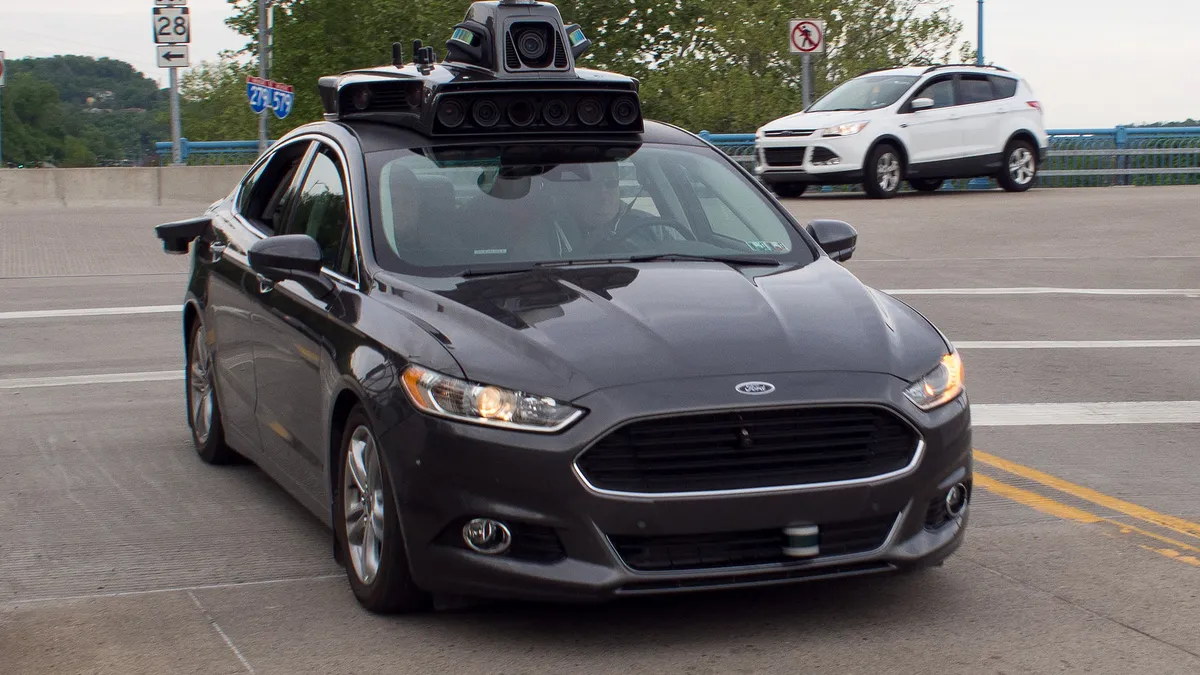Dive Brief:
- Uber's self-driving testing ground of Pittsburgh, PA has already seen its share of driverless confusion since the program's debut on September 14, Quartz reports.
- Though the cars' safety measures include rigid programming to adhere to driving laws, a designated "safety driver" behind the wheel and an engineer in the adjacent seat, reports of errors made by the cars are growing.
- Bystanders report cases of mild rear-ending, wrong way turns, and other errors committed by the alleged wonder cars. Uber's self-driving cars are insured for up to $5 million per incident, in line with pending legislation in the state.
Dive Insight:
With concerns about automated trucks replacing drivers growing, mounting violations show the technology is far from ready for full-scale adoption. Still concerned? See a video of a self-driving car running a red light below.
Simply put, if driverless cars are causing minor accidents at low-speeds in city streets, it is unlikely the safety-first Federal Motor Carrier Safety Administration would approve the technology in the highway. As the first company to test the technology in a commercial setting, Uber's success or failure could define the innovation's path with regards to safety.
Yet proponents of the technology argue Uber's technology should not be the standard bearer due to the various methods of autonomous technology arising. Uber's approach is hyper-logical and map-based, according to Quartz, while Nvidia's technology focuses on experiential learning models, a reportedly more "human" approach.
And then we have Mercedes-Benz self-driving trucks, which aim to take advantage of the highway's simplicities through a monitored autopilot approach.
With a variety of methods — all still unproven — those who foresee a rapid adoption of driverless vehicles need not check the want ads just yet, nor start issuing pink slips.













